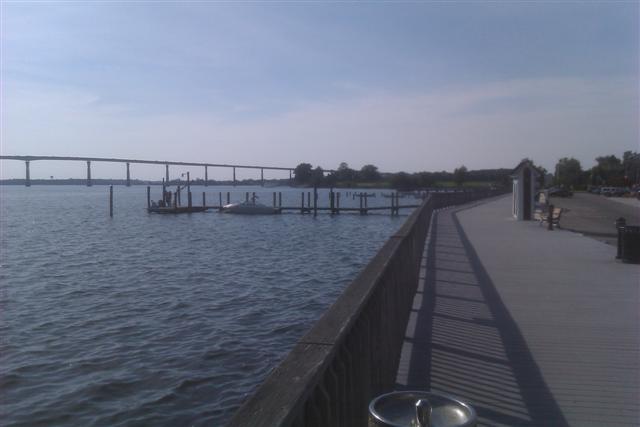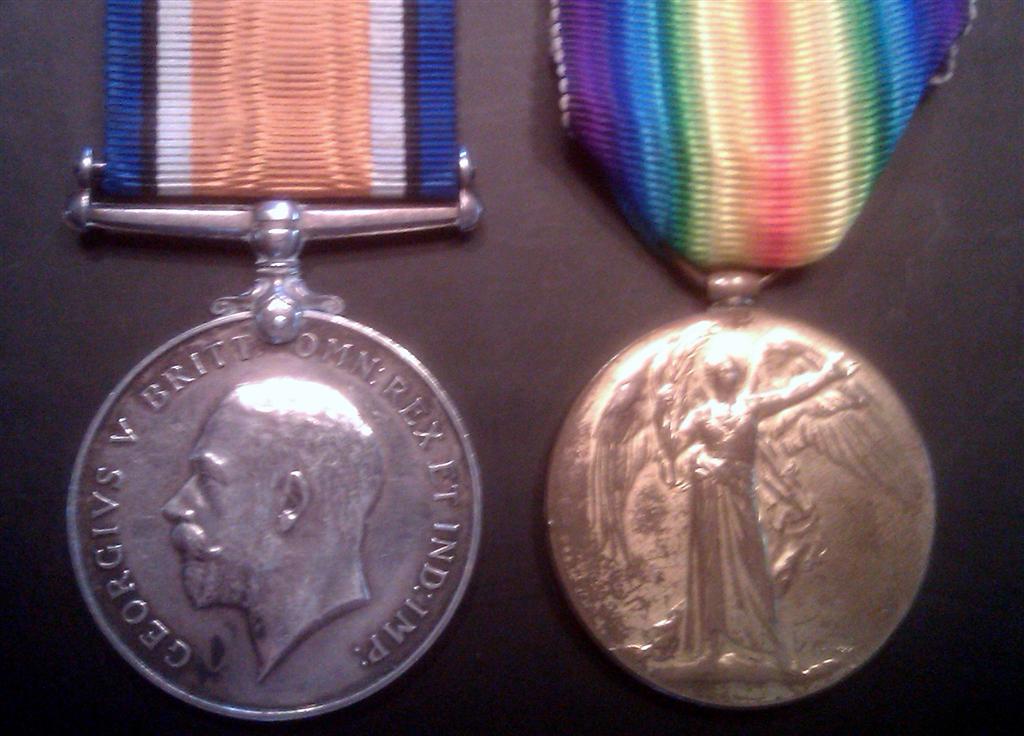-
Posts
5,629 -
Joined
-
Last visited
Content Type
Profiles
Forums
Blogs
Gallery
Events
Store
Posts posted by IrishGunner
-
-
Ahhh, a few vodkas flowed soon after.
0 -
After reading Rommel's "Infantrie Greift An" I am partial to the Württembergisches Gebirgsbataillon. The mystique was enhanced when I had the chance to walk the ground in Slovenia where the fighting on the Isonzo Front occured. Also, while a modest item, I was happy to obtain a post card sent home from a soldier in the unit.
0 -
Have both; don't wear either. Same with my wife; two - wears neither. No real sentimental attachment to these bits. Then again, I don't usually wear a watch either. Only my wedding band. I think these rings are a thing of the past - neither of my two sons desired a high school ring and my daughter now a HS junior has no interest either. I see almost no one wearing one today in the business executive realm. A bit of an anachronism.
0 -
Mike, thanks for the addition to this old thread. Your info that "All medals to NZers were engraved as "NZEF" regardless" is what I was concerned about - making finding medals to gunners just a tad more work intensive. Thanks again.
0 -
I would also add that Prussian artillery in 1870 was the decisive factor in many engagements - because of it's advanced breech loading guns. Still, this was short duration and in direct support of infantry engagements. I'd still give the most dangerous "award" to WWI.
0 -
how much more danger was artillery to soldiers in WW1 as opposed to 1870
Well, that question is far more than one of range - the full answer lies in different tactics. I wrote the following to be part of a website on WWI artillery that I have in mind - should I ever make the time:
"Feld-Artillerie tactics prior to the war emphasized following the infantry and then moving the batteries quickly into position to engage the enemy at short ranges, firing over open sights. This tactic frequently was demonstrated with cavalry-like panache during the Kaiser's annual maneuvers. Observed fire was the standard target-attack method, with the battery commander himself usually performing as the observer. The development of indirect fire methods began in the years just before the outbreak of the war and as the war progressed, trench warfare would demand different Artillery tactics, including the utilization of forward observers and a gradual shift to predicted fire or map-based target-attack techniques. During the early days of the war, the Fuss-Artillerie supplanted the Feld-Artillerie as the decisive fire support arm due to its success in defeating the border fortresses and because high-angle fire was essential for trench warfare. Heavy Artillery was also critical for preparations prior to attacks, particularly for attacking deep targets in the enemy's rear and for counterfire against enemy artillery. Initially, Artillery preparations were massive affairs, sometimes lasting days, followed by a technique known as creeping fire, shifting forward just ahead of the infantry advance. Predicted fire allowed a German Artillery officer, Colonel Georg Bruchmüller, nicknamed Durchbruchmüller (a play on his name and the German word “durchbruch” meaning breakthrough) to develop the concept of a centrally-controlled surprise massive bombardment just prior to the infantry attack. This successful innovation replaced the concept of creeping barrages even with the Allies."
Of course, just the volume of ammunition expended during WWI as compared to 1870 made life pretty dangerous. Add the idea of constant harrassing fire - along with your initial thought of range - reaching far behind the lines with larger caliber weapons, as well as artillery-delivered gas attacks, and there should be no doubt that artillery was much more dangerous in WWI than in 1870. I've read somewhere that 60% of all casualties in WWI were the result of artillery. I'd have to go and search my references to give you an authoritative source on that statistic if you desire.
0 -
Well, based upon the way you asked the question, Paul's answer is a target hit!

Ulster is spot on - it depends upon the gun - howitzer - mortar; what specifically are you trying to get at?
(I guess I should get on with my webpage idea.)
0 -
Dziękuję bardzo, Lukasz. An excellent bar and great info.
0 -
Maybe some members with a more extensive postcard/photograph collection than mine can add someething about the wearing of Kappenabzeichen in general. I have only a couple postcards of KuK soldiers wearing Kappenabzeichen - unfortunately, none are artillerymen to see if any are similar to these.
0 -
I can't say if these were worn by units or not, but I can say that nothing on them relate to a specific unit. The Skoda produced artillery pieces - 30,5cm Mörser and 42cm Haubitze - depicted on the badges were in several different Austrian KuK Festungsartillerieregiment and Schweres Artillerieregiment.
I believe only 8 or so 42cm Haubitze were produced. And less than 100 of the 30,5cm Mörser.
As for value, I can't really add much info. I've looked at a lot of Kappenabzeichen, but have discovered there are a lot of copies out there; so, I've been wary of purchasing. I like the look of the one in the link Chris provided and I bought one from eBay awhile back that was also in the 30 Euro range. Also, someone on GMIC awhile back was selling a lot of these Kappenabzeichen - they are in high demand if original and for particular units.
0 -
"Entlassungsschein aus den Heeresdienste" is his "Dismissal from Army Service" document. Effective 4 December 1918, signed by the Chief of Staff of the XIV Army Corps in Karlsruhe.
0 -
Paul, I agree - imagine making a crossing on one of the old liners. I've only seen a few pictures of the interiors of the ships.
0 -
Congrats! One to go...
Interesting side by side comparison - one very simple design; the other quite futuristic.
0 -
Posed. Angle of the rifle looks like he's shooting into the side of the trench. And as Spaz said, two helmets and a belt neatly placed on the box?
0 -
USS Thor ARC 4 was awarded the Meritorious Unit Citation for the following periods:
27-AUG-1969 15-NOV-1969
16-AUG-1971 09-OCT-1971
The Thor (or those serving in her) didn't recieve the AFEM.
Source OPNAVNOTE 1650
I don't think he meant that the medal was earned on the Thor - only that this was PO1 Marr's ribbon bar when he served on the Thor. He then would have earned the medal prior to reporting aboard the Thor.
0 -
It has a certain reserved dignity to it I think.
I agree - a nice bar showing honorable service - and some history.
0 -
A photo from the internet showing the ships moored in the river.
 0
0 -
The Thomas Johnson Bridge today and the area the marker states the ships were moored.
 0
0 -
It's surprising sometimes where on comes across WWI history. During a summer trip along the Chesapeake Bay, I found this historical marker on the boardwalk at Solomons Island, Maryland. I've had the photo on my smartphone for a few months and just now found some time to look-up some of the history online.
It seems the German luxury liners known under their German flags (US Navy commission) as SS Kronprinzessin Cecilie (USS Mount Vernon), SS Kaiser Wilhelm II (USS Monticello), SS Amerika (USS America), and SS George Washington (USS George Washington), sailed the frequent Germany-United States trans-Atlantic route before August 1914. However, when war broke out in Europe, the ships were in US ports; therefore they were seized by the US Navy and later pressed into service as troop transports ferrying US troops to Europe in 1917. After the war, they found their way to the Ghost Fleet on the Patuxent River.
The SS Amerika also has a Titanic connection; radioing a warning of icebergs in the area where the Titanic would hit one three hours later. USS Mount Vernon would be torpedoed by a U-Boat. USS George Washington was the only one of the four to see WWII service as a transport. USS America and USS George Washington would later be the names of US aircraft carriers. Each ship has a pretty good wiki history.
But like most old ships - they would eventually be sold for scrap. And this marker is one of the few reminders of this interesting bit of WWI naval history.
 0
0 -
Noor and I were having a great discussion the other day in GMIC chat about the medals and history of the Royal Dublin Fusiliers; so, I thought I'd post my only pair to the Regiment for further discussion if possible and warranted.
I've done no research as of yet; but have learned from Noor that Pte. Cyril S. Cullum (41358),
enlisted 29 June 1916; transferred to the Royal Irish Reg; discharged 14 May 1919; entitled SWB.
(PS: I tried to do a rim shot of the name, but haven't perfected this technique.)
 0
0 -
Petty Officer, First Class
0 -
National Defense Service Medal with star means he probably was on active duty 50-54 during Korean War (but no Korea service) and 61-74 for Vietnam War (but no Vietnam Service - although the AFEM could be for VN service prior to 65).
So, a career sailor with his only campaign being recognized by the Armed Forces Expeditionary Medal and his unit being recognized with the Navy Meritorious Unit Commendation. Let's see...I'll guess he was on a ship during the 1961 Cuban Missile Crisis. The first operation that was entitled to the AFEM.
Another possibility is that he was on a ship in 1968, during naval operations in defense of the USS Pueblo, which was seized by North Korea.
No Vietnam service though...so maybe those early actions aren't plausible.
With that many oak leaf clusters on the Navy Good Conduct Medal I don't think it would be later - he would probably have some other individual award.
I'd go as late as 1975 and the The Mayaguez incident.
0 -
Nice photo. Serious looking young man.
0 -
Chris, have you read anything that explains the reason behind the regulation location for the EK1 being the lower left side. Always seemed an unusual location to me...
Any reason other than this was the traditional place for breast stars?
0




All metal entrenching tool....
in Germany: Imperial Uniforms, Headwear, Insignia & Personal Equipment
Posted
Only modern, folding, versions. If it were WWI vintage, would it not be likely that it was a local fabrication vice factory manufacture?